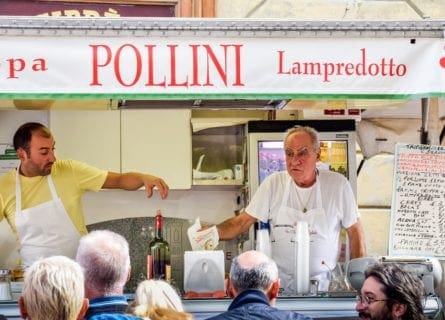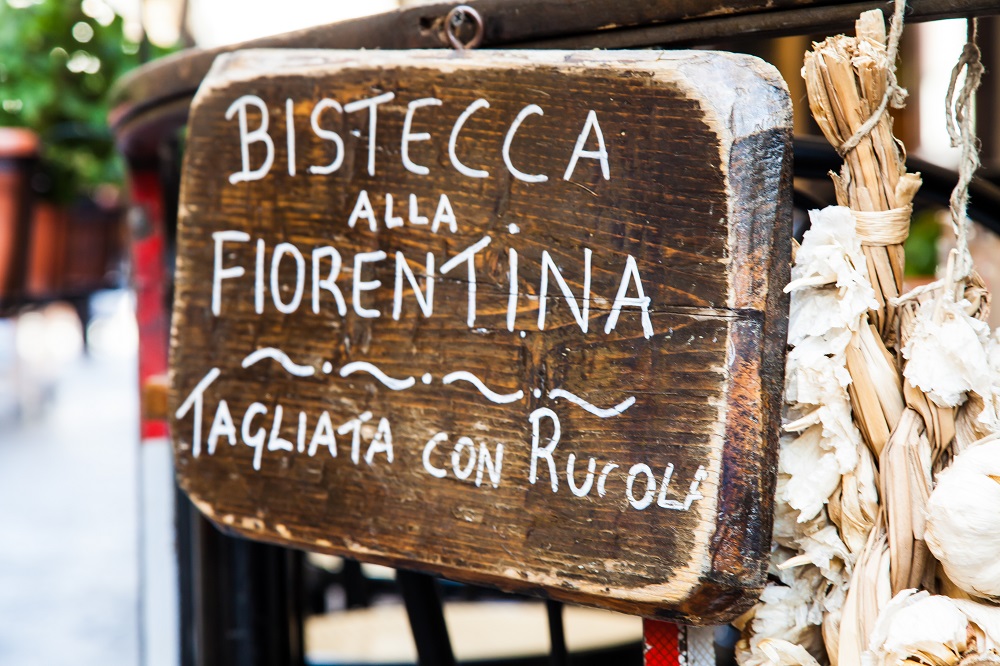
A Taste of Florence: Discovering Authentic Tuscan Cuisine
November 19, 2023
Uncover the flavors of Florence: A guide to Tuscan culinary delights. Explore traditional dishes, local ingredients, and historic food influences.
By: James lawrence / Last updated: December 23, 2023
Estimated reading time: 5 minutes

Guide to Tuscan Gastronomy and Cuisine: Read more
Regional Cuisines:
Arezzo, Florence, Lucca, Maremma, Pisa
Here’s an example of First World problems: Should it be Florence or Siena? Yet, in terms of grandeur, architecture, and superlative food and drink, there is little between them. Once a capital to rival Florence, Siena is endowed with some of Tuscany’s finest restaurants, often sourcing their produce from kitchen gardens and local farms. Meanwhile, the world’s greatest monument to the Renaissance offers a thrilling line-up of mouthwatering dishes, not least the iconic Bistecca alla Fiorentina (T-bone steak) and enough Sangiovese to sink a battleship. Sourced from the exquisitely beautiful Val di Chiana, the Tuscan breed of cattle is a cut above – gastronomes regard it as Europe’s seminal steak. Afterward, head to Castelnuovo di Garfagnana for porcini mushrooms and chestnuts and to San Miniato for white truffles on par with the best of Piedmont. Just leave room for Tuscany’s world-famous reds: Chianti Classico and Brunello di Montalcino.
Some foodies regard antipasti as the highlight of their meal. No, they haven’t gone mad: this tradition is one of the most rewarding aspects of dining out in Italy. A selection of hot or cold appetizers, often involving cured meats, stimulates the appetite and calls for a glass of something chilled or sparkling. It’s fun, convivial, and best shared with friends in tow. Try the futtunta for a simple taste of rural Tuscany: grilled bread rubbed with garlic cloves and then drizzled with the first virgin olive oils of the season. For perfection, add coarse sea salt.
But many venues in Siena will serve large platters of salami, prosciutto, and quite possibly some crostini (small pieces of toasted bread) adorned with chicken liver pâté. Indeed, so copious are the complimentary buffets in the larger bars that younger Tuscans increasingly forgo dinner for the apericena. Sip a glass of Maremma Sauvignon Blanc and prepare for the feast to come.
Florentines are very keen on Ravioli stuffed full of spinach and ricotta – the quintessential Tuscan first course. You may find the pasta sitting in a bowl of tomato sauce; use the accompanying bread to wipe any remaining pomodoro. Ribollita is also extremely popular in Siena: a traditional soup made with legumes (one of the key staples of Tuscany), vegetables, and leftover bread, slowly braised in a rich stock for many hours. You could also nibble on some finocchiona briciolona (pork salami made with fennel seeds and Chianti) if you’re ravenous. However, many regard Pappardelle alla Lepre as the summit of culinary achievement in central Tuscany. Wild hare is slowly braised for hours in a mixture of tomatoes, garlic, onions, celery, red wine, and fresh herbs before being shredded and served with ribbon egg pasta. Two things are obligatory: fresh Parmesan and a glass of Chianti Classico Riserva.
The local cliché is Bistecca alla Fiorentina, perhaps served with rosemary potatoes. Tuscan gourmets lean heavily into local ingredients and time-honored recipes, and it does not get more regional than the finest Chianina beef sourced from the Chiana Valley. Both Florentines and their compatriots in Siena will tell you that blue and bloody is the only way to enjoy this succulent slab of T-bone steak, although bistecca cooked over vine embers in the summer can have an uncommon depth of flavor.
Are you feeling adventurous? If so, leap head first into the world of offal; lampredotto is a classic peasant dish that has stood the test of time. The chef takes a portion of the cow’s stomach and dice and seasons it before gently simmering the offal in a tomato, onion, garlic, and stock broth. Available at every trippaio in Siena, lampredotto is honestly nicer than it sounds!
Central Tuscany’s other meat passion is cinghiale (wild boar). In Siena, kitchen maestros are fond of braising the chin or shoulder of this occasionally dangerous animal – wild boar attacks occur every year! – in a concoction of vegetables, pomodoro fritto, garlic, and wine, waiting until it falls off the bone. Its intense, gamey flavor is complemented by the herbs that grow across Tuscany: bay leaves, rosemary, cloves, juniper, and nutmeg.
Cheese lovers, meanwhile, make a beeline for Pienza and its delectable pecorino; the Val di Chiana is renowned for its tangy, piquant sheep cheese wrapped in fern fronds, called ravaggiolo. Incidentally, the town of San Gimignano, situated northwest of Siena, is the home of Europe’s finest saffron. It was also the first to receive a DOP designation for this local delicacy, much-loved by Michelin chefs worldwide.
Sipping Vin Santo and devouring a slice of panforte is practically a religion in the medieval streets of Siena’s old quarter. A rich cake of almonds, honey, and candied fruit, panforte offers an authentic taste of the Italian Dolce Vita. Yet some would decry this age-old pastime as passé. Younger Tuscans often elect to queue at their favorite gelataria, and we don’t blame them. The best ice cream in the world is undoubtedly made in Italy; artisan producers always use seasonal natural ingredients, such as figs, chestnuts, pine nuts, honey, saffron, and wild strawberries. There is nothing quite like it.
For centuries, Florentine merchants sold the latest vintage to members of the Medici dynasty and their hangers-on; the Sangiovese-based reds of Chianti Classico and Montalcino are among Tuscany’s most significant expressions of grape, climate, and soil. But there is a wealth of alternatives in the hills between Florence and Siena, including seductive Bordeaux blends, elegant Chardonnay, and even a smattering of traditional-method fizz. Central Tuscany has an international flagship in the Sangiovese grape, but its industry can play many tunes.
If you would like us to customize an exclusive luxury tour, contact us and let us know your travel plans. We offer luxury food and wine tours for private groups of a minimum two guests. In addition, all of our private, chauffeured tours are available year-round upon request.

